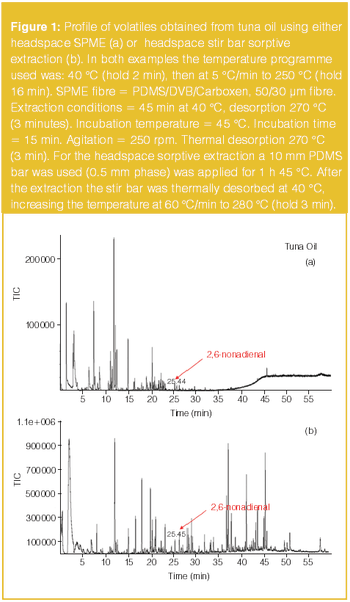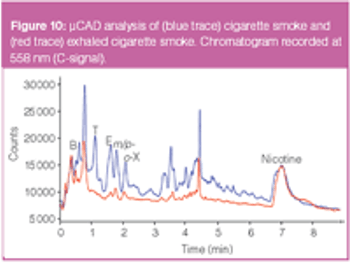
LCGC Europe
A review of the role of Solid-phase Microextraction (SPME) in quality control (QC) in the fish oil industry.

LCGC Europe
A review of the role of Solid-phase Microextraction (SPME) in quality control (QC) in the fish oil industry.


LCGC Europe
What measurements are required for system suitability?

LCGC Europe
Columnist Ron Majors discusses some of the practical considerations in the successful application of the popular yet age-old technique of solvent extraction (also known as liquid–liquid extraction, or LLE). After a brief review of the basics, guidelines on the selection of the appropriate extraction solvents and how to use acid–base equilibria to ensure efficient extractions of ionic and ionizable compounds are provided. Problems in LLE and the solutions to these problems are highlighted. A newer technique called dispersive liquid–liquid microextraction (DLLME) is introduced.

LCGC Europe
A miniature gas chromatograph incorporating a miniaturized chemical trap for enrichment, rapid thermal desorption of the trap, a resistively heated capillary column for programmed GC analysis and a micro-chip-based plasma emission detector (PED) is described. The sampling and chromatographic conditions for the analysis of volatile compounds in air are presented. The performance of the µCAD is illustrated in the universal (carbon) mode and for the selective detection of chlorinated and organo-mercury compounds. Detection limits (DLs) are at the sub-μg/L level in the carbon mode and 10 ng/L for organo-mercury compounds.

LCGC Europe
Pittcon celebrates 60 years of service to the scientific community and remains an unmissable event in the analytical chemistry calendar.

LCGC Europe
Detectors are another link in the chain of signals that a chromatographic analysis generates. After separation, a detector transduces the chemical signals of eluted analytes to an electrical signal that is then recorded and measured. The identities and amounts of analytes are determined from this information. This month in "GC Connections", John Hinshaw examines the environment, set-up and operating conditions necessary to ensure high gas chromatography detector performance and reliability.